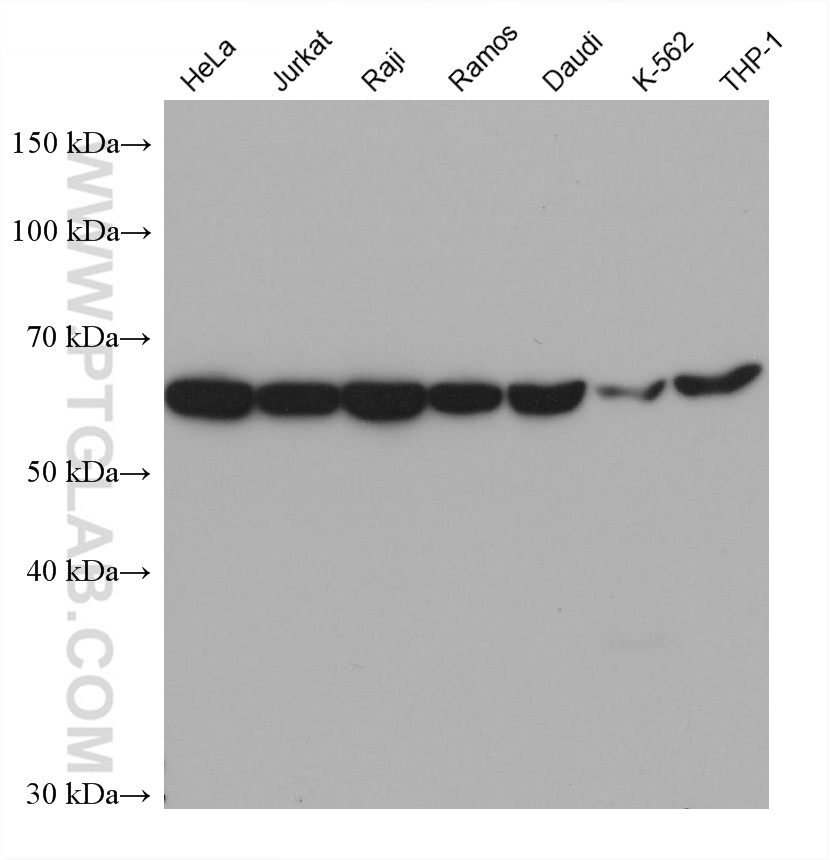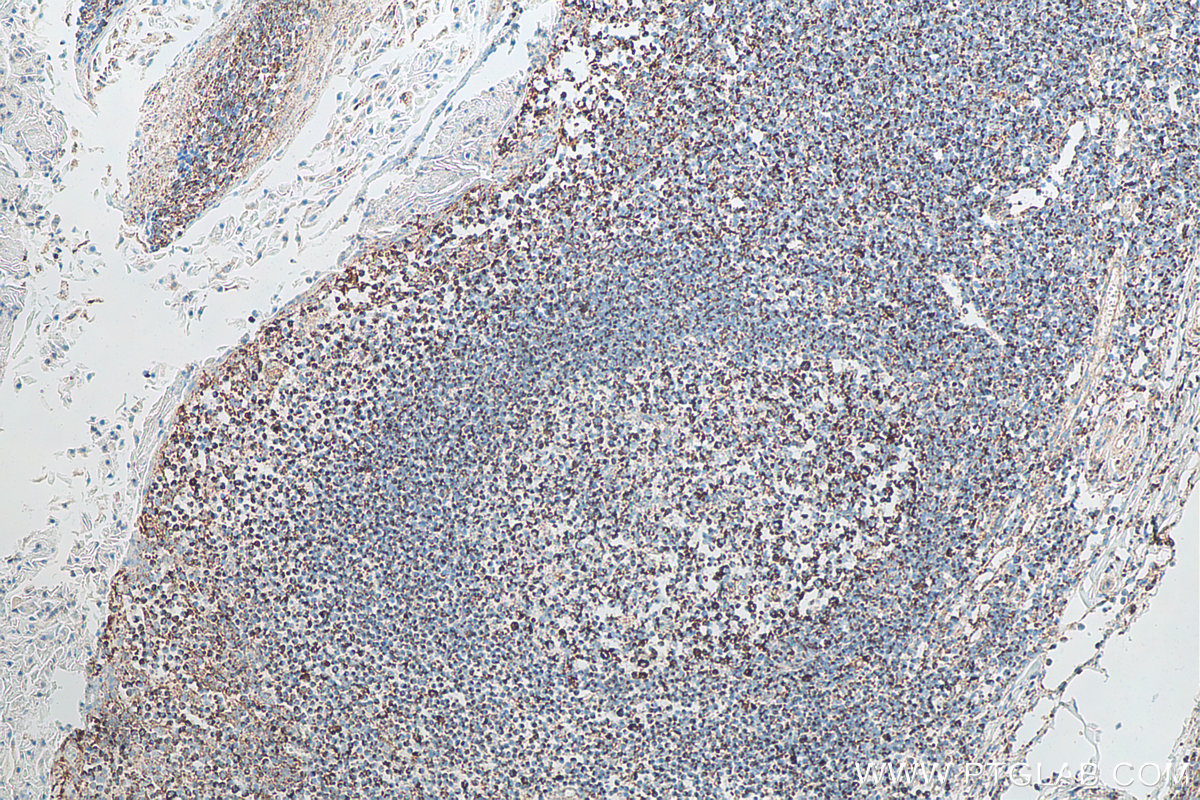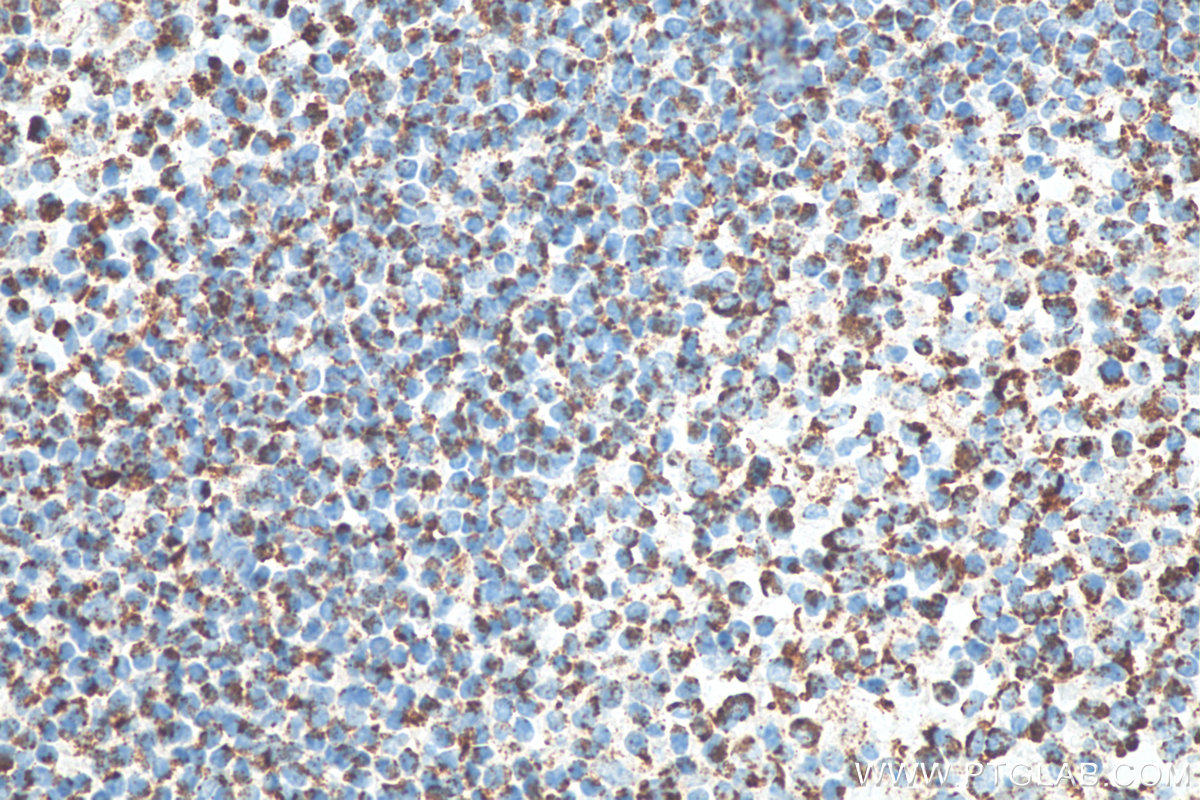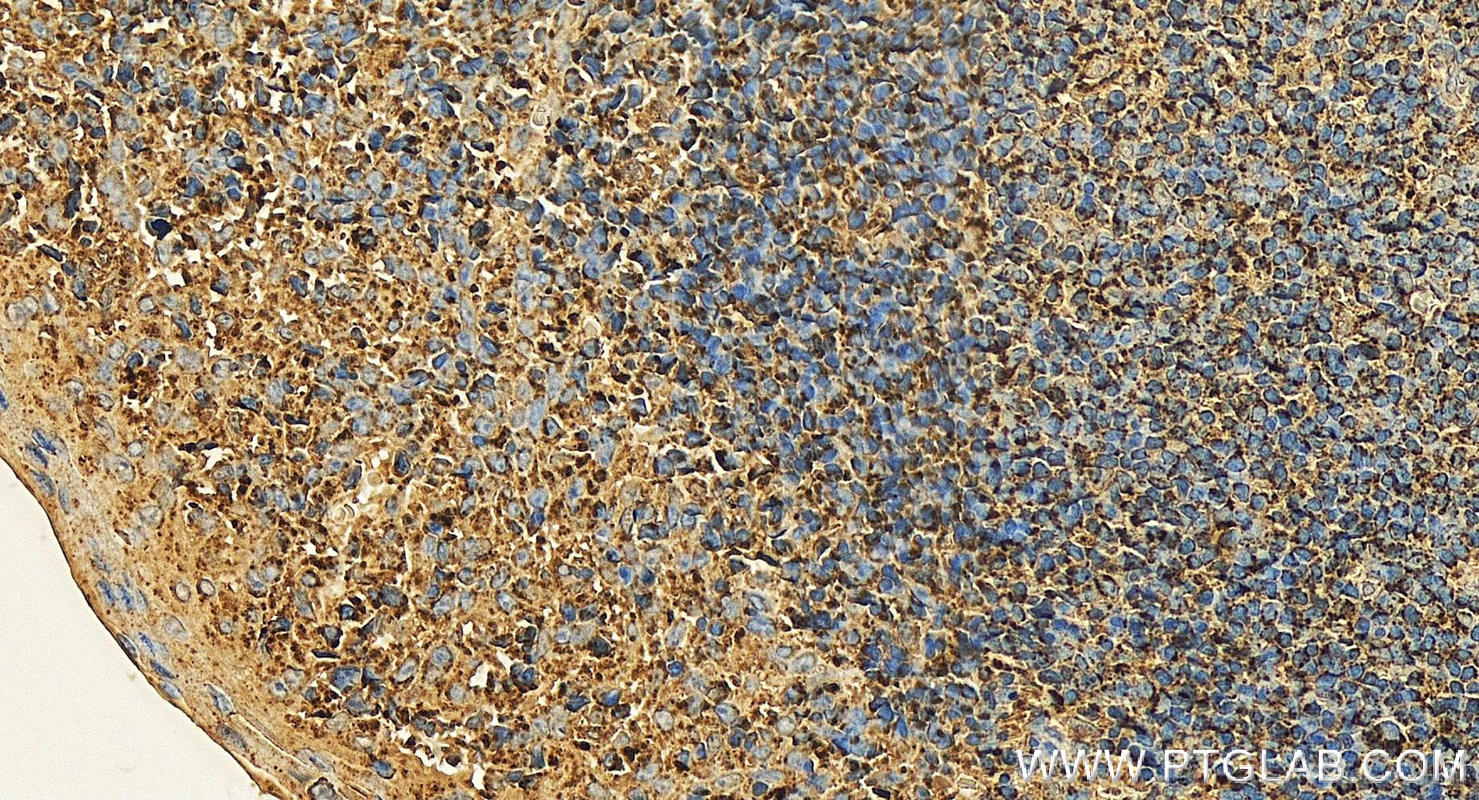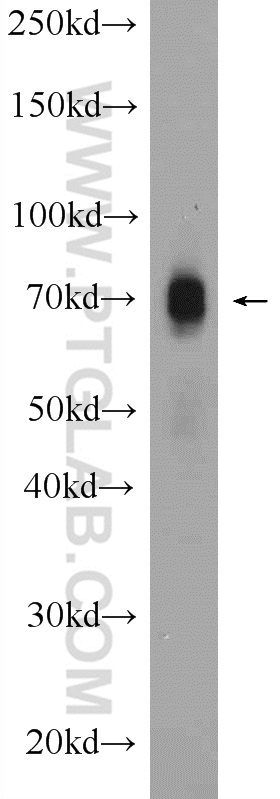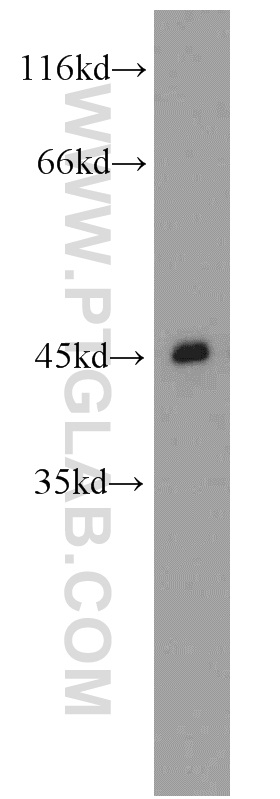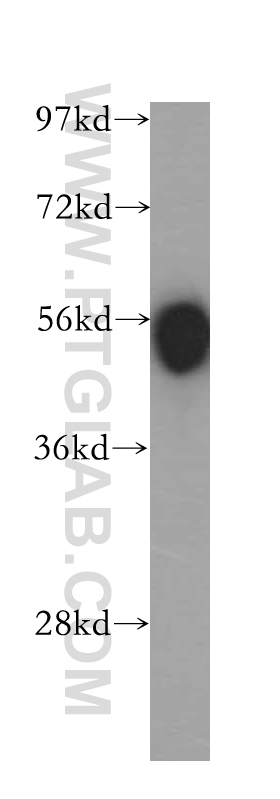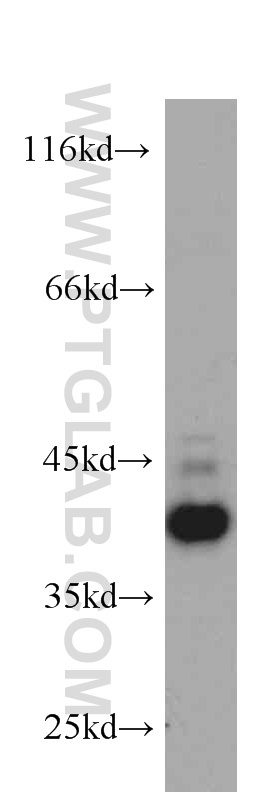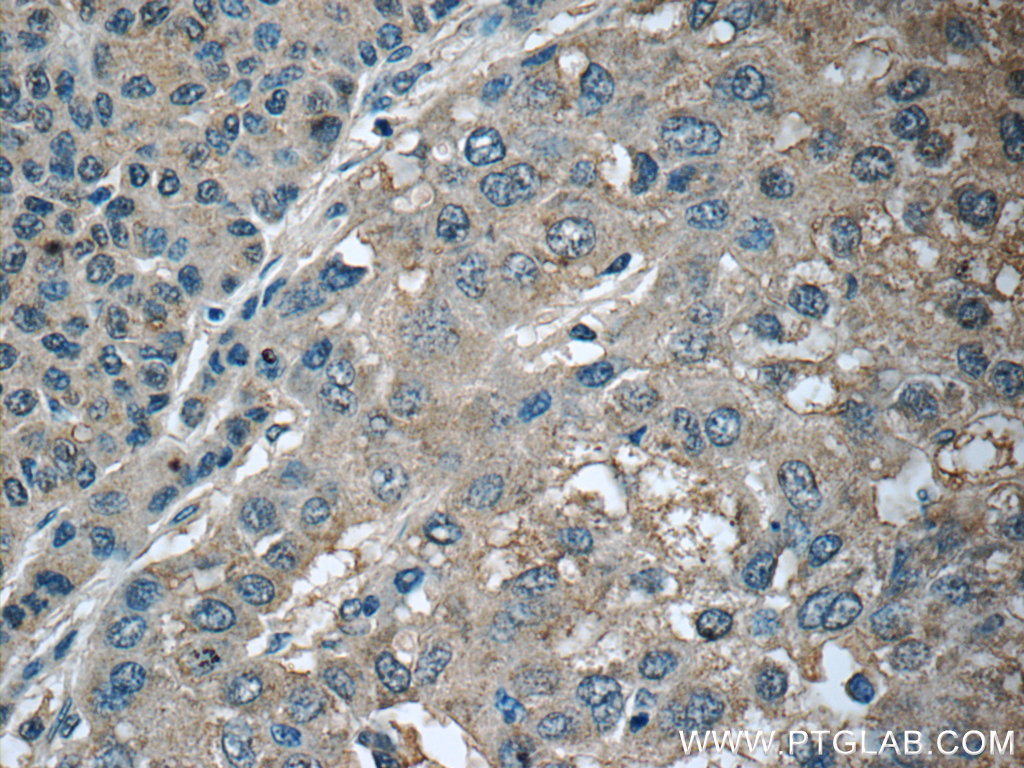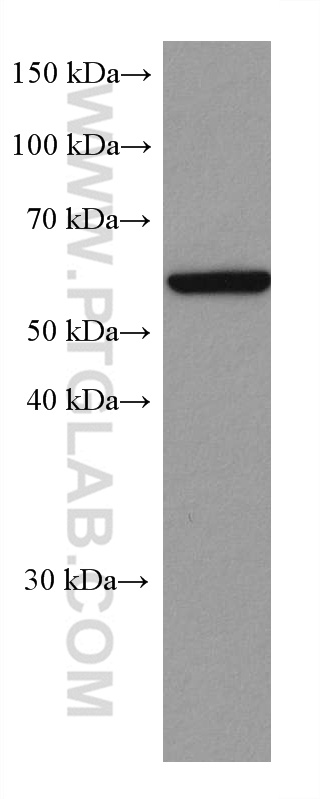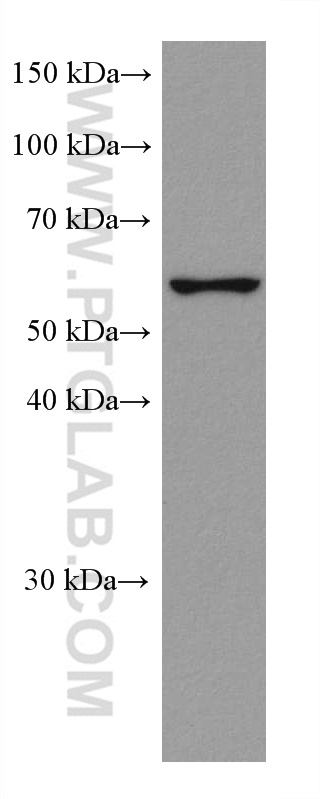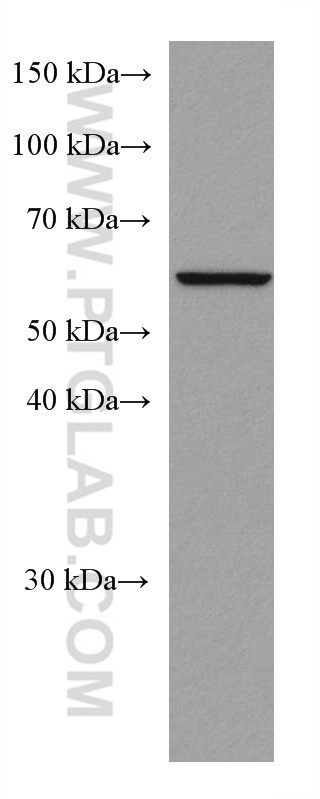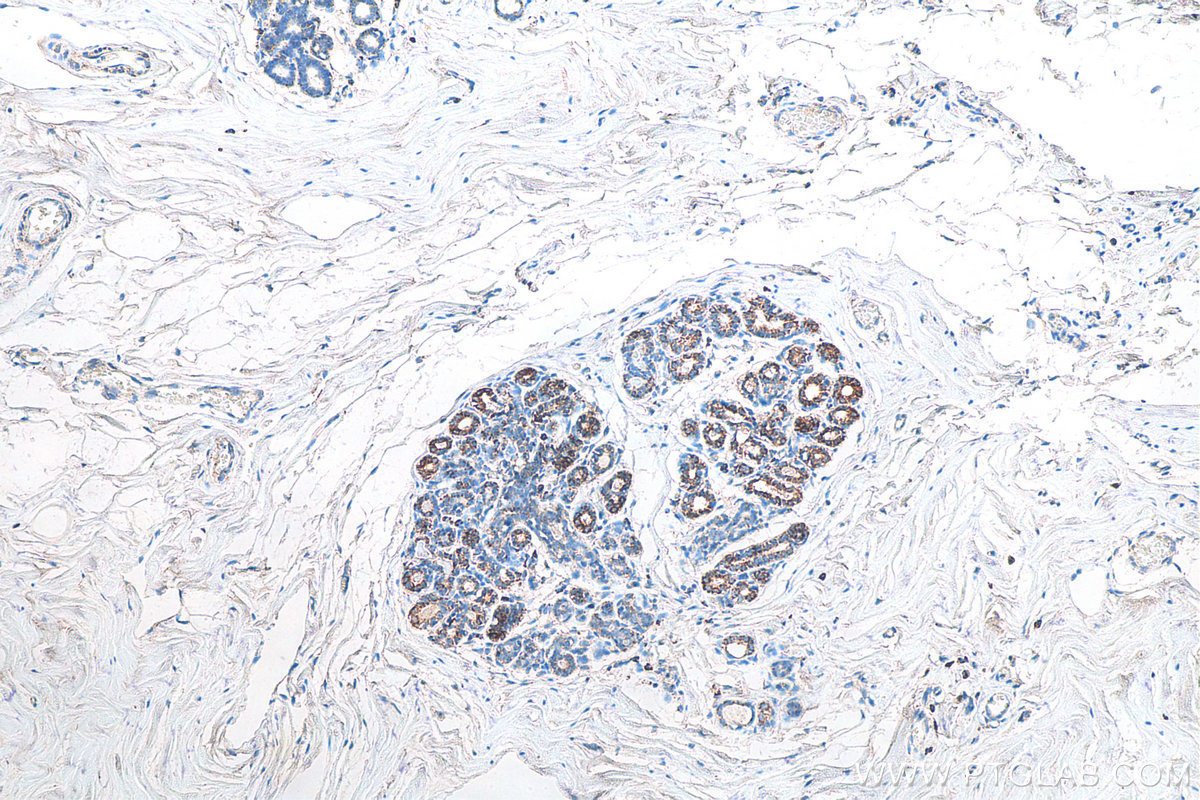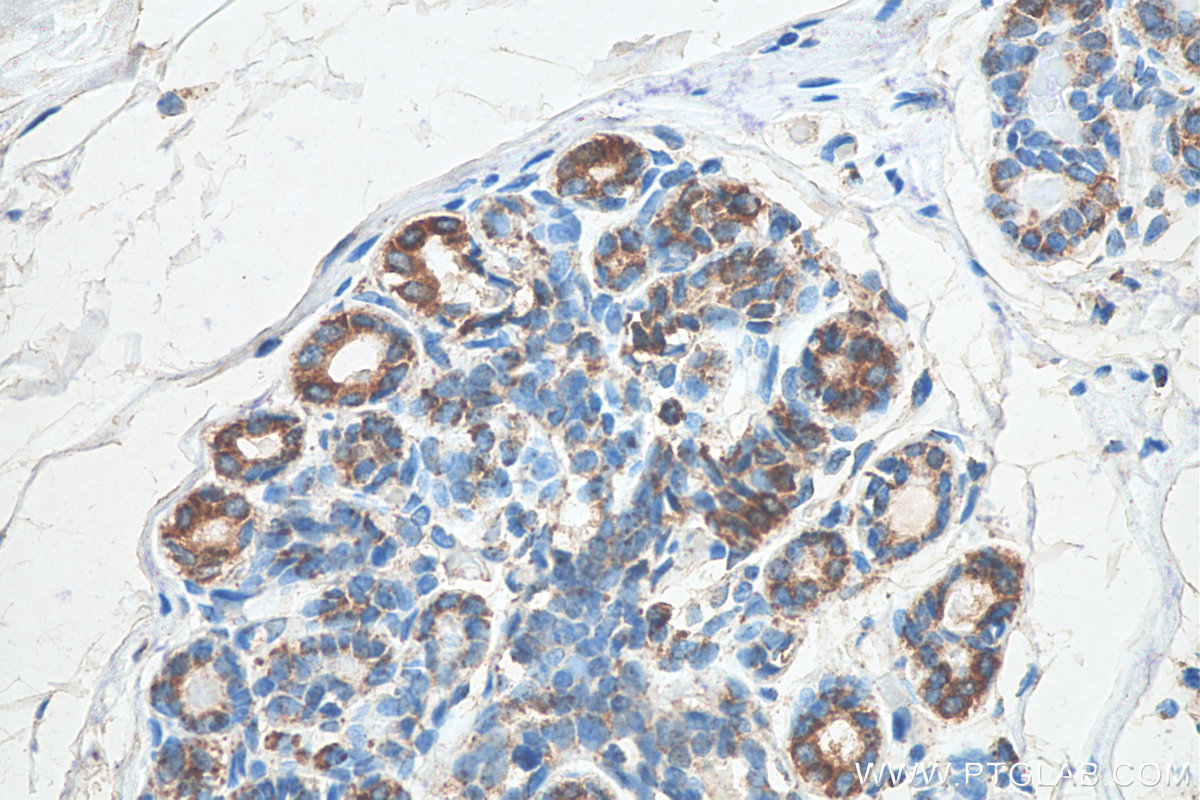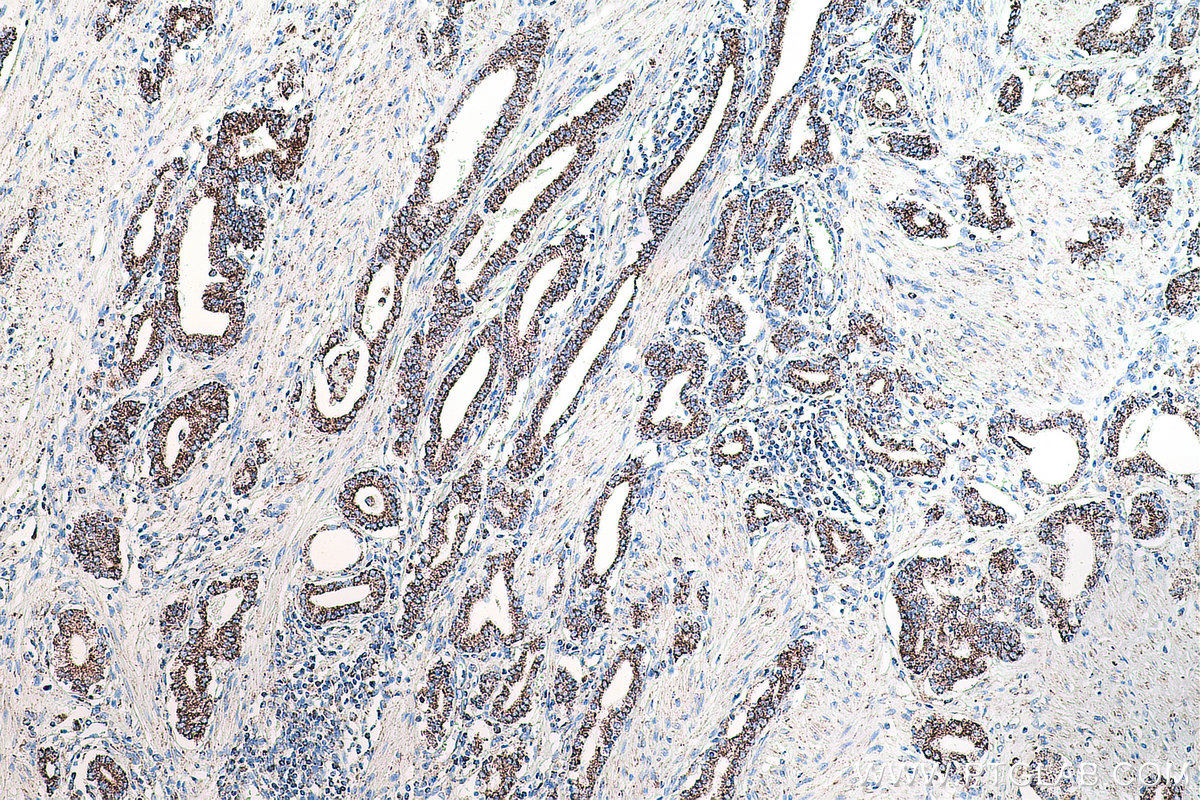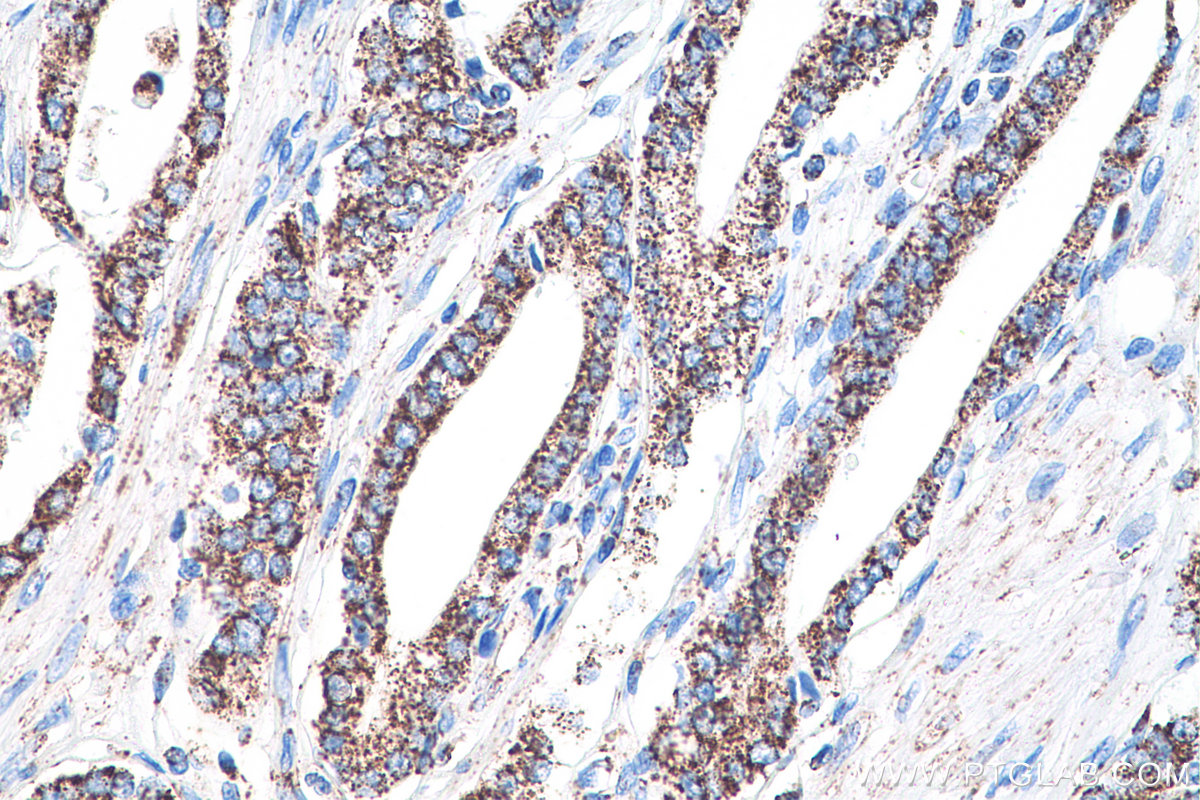- Featured Product
- KD/KO Validated
CXCR4 Monoclonal antibody
CXCR4 Monoclonal Antibody for WB, IHC, ELISA
Host / Isotype
Mouse / IgM
Reactivity
human and More (1)
Applications
WB, IHC, ELISA and More (2)
Conjugate
Unconjugated
CloneNo.
4B5E4
验证数据展示
经过测试的应用
| Positive WB detected in | HeLa cells, THP-1 cells, Ramos cells, Daudi cells, Jurkat cells, Raji cells, K-562 cells |
| Positive IHC detected in | human tonsillitis tissue, human breast cancer tissue, human prostate cancer tissue Note: suggested antigen retrieval with TE buffer pH 9.0; (*) Alternatively, antigen retrieval may be performed with citrate buffer pH 6.0 |
Mouse monoclonal antibodies of IgM isotype can be detected with "anti-mouse IgG (H+L)" secondary antibodies.
推荐稀释比
| Application | Dilution |
|---|---|
| Western Blot (WB) | WB : 1:1000-1:4000 |
| Immunohistochemistry (IHC) | IHC : 1:300-1:1200 |
| It is recommended that this reagent should be titrated in each testing system to obtain optimal results. | |
| Sample-dependent, Check data in validation data gallery. | |
产品信息
60042-1-Ig targets CXCR4 in WB, IHC, IF, CoIP, ELISA applications and shows reactivity with human samples.
| Tested Applications | WB, IHC, ELISA Application Description |
| Cited Applications | WB, IHC, IF, CoIP |
| Tested Reactivity | human |
| Cited Reactivity | human, mouse |
| Immunogen | CXCR4 fusion protein Ag1528 种属同源性预测 |
| Host / Isotype | Mouse / IgM |
| Class | Monoclonal |
| Type | Antibody |
| Full Name | chemokine (C-X-C motif) receptor 4 |
| Synonyms | CXCR-4, CXC-R4, CXCR 4, CXC R4, C-X-C chemokine receptor type 4 |
| Calculated Molecular Weight | 352 aa, 40 kDa |
| Observed Molecular Weight | 60~70 kDa |
| GenBank Accession Number | BC020968 |
| Gene Symbol | CXCR4 |
| Gene ID (NCBI) | 7852 |
| RRID | AB_2091809 |
| Conjugate | Unconjugated |
| Form | Liquid |
| Purification Method | Caprylic acid/ammonium sulfate precipitation |
| UNIPROT ID | P61073 |
| Storage Buffer | PBS with 0.1% sodium azide and 50% glycerol pH 7.3. |
| Storage Conditions | Store at -20°C. Stable for one year after shipment. Aliquoting is unnecessary for -20oC storage. |
背景介绍
实验方案
| Product Specific Protocols | |
|---|---|
| WB protocol for CXCR4 antibody 60042-1-Ig | Download protocol |
| IHC protocol for CXCR4 antibody 60042-1-Ig | Download protocol |
| Standard Protocols | |
|---|---|
| Click here to view our Standard Protocols |
发表文章
| Species | Application | Title |
|---|---|---|
Adv Sci (Weinh) Mesenchymal Stem Cell Membrane-Camouflaged Liposomes for Biomimetic Delivery of Cyclosporine A for Hepatic Ischemia-Reperfusion Injury Prevention | ||
Nat Commun HIF-1α-PDK1 axis-induced active glycolysis plays an essential role in macrophage migratory capacity. | ||
J Exp Med CXCR4 regulates Plasmodium development in mouse and human hepatocytes.
| ||
Cancer Lett YTHDF1 promotes the osteolytic bone metastasis of breast cancer via inducing EZH2 and CDH11 translation | ||
Nanoscale Mitomycin C-treated human-induced pluripotent stem cells as a safe delivery system of gold nanorods for targeted photothermal therapy of gastric cancer |
